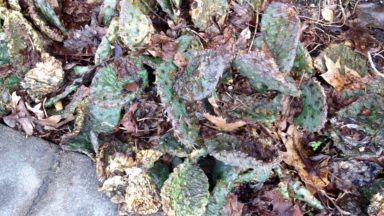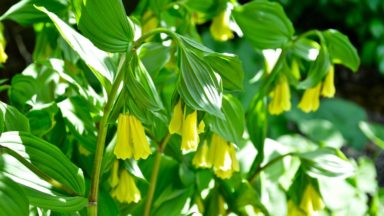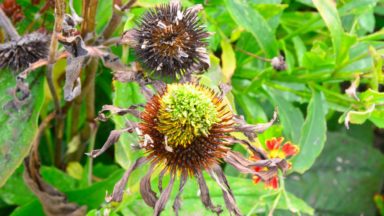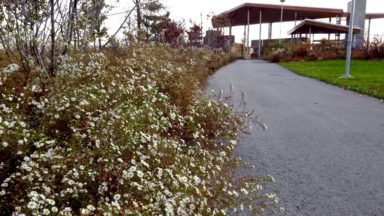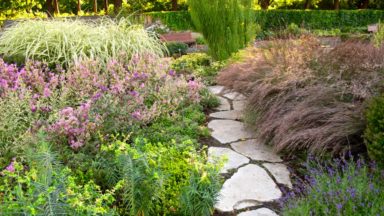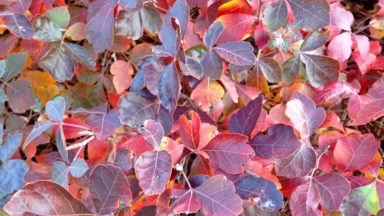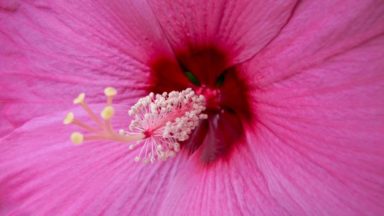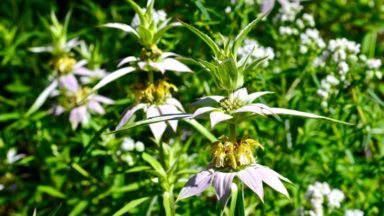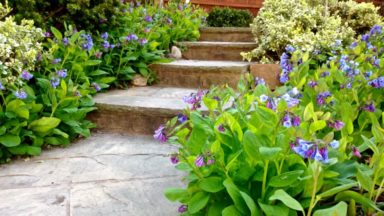If this seems a gruesome way to begin, it’s because of my “undying” admiration of the paddle cactus or prickly pear (Opuntia spp.). D buy lexapro online www.clerkenwellislingtonclinics.co.uk/ online pharmacy buy modafinil with best prices today in the USA wp-content/uploads/2024/08/jpg/lexapro.html no prescription pharmacy id you know that southern Ontario has a native cactus (in the wild, it’s […]
Not a native plant (but it sure looked like one)
When Gail of Clay and Limestone reminded me about her upcoming Wildflower Wednesday meme, I got all excited. I’d been saving the shot above for a post with the working title “lesser-known native plants.” Trouble is, the more I looked, the more I saw it isn’t the plant I’d thought it was (Uvularia grandiflora or merrybells) – though at […]
Coneflower rosette gall mites
The more we plant something, the more something comes along to eat it. Usually something buggy. In the case of coneflowers (Echinacea), this green, tufted centre in the centre of the disk is a sign of some undesirable noshing going on. The culprit is an unnamed type of eriophyid mite, a breed of microscopic, sucking […]
November in Corktown Common
Before the rain began this morning, our walking group headed west for a change. The Distillery District would be our turnaround point, but I never made it that far. Corktown Common and a golden patch of flowering witch-hazel fixed me and my phone camera to the spot. Click the arrows above for the slideshow. What an excellent […]
Little bluestem, a great native grass
Sometimes you can know of a plant without really knowing it. You hear the name often, but wouldn’t be able to pick out the face in the crowd – or in the garden. That’s how it used to be for me with the native grass called little bluest online pharmacy buy tirzepatide with best prices today […]
Pros and cons of fragrant sumac
While camping at The Pinery provincial park a few years ago, I took the green picture below, curious about the shrub. It had “leaves of three,” similar to poison ivy (formerly known as Rhus radicans, now Toxicodendron radicans syn. T. rydbergii) But those berries, if that’s what they were! Fuzzy, kind of like a staghorn sumac (Rhus typina). Turns out […]
The secret life of red maple trees
Hello, I love you, won’t you tell me your name? Of course, I was talking to this beautiful tree in its red cloak, spotted in an East York garden not far from home. Every step slowed as I walked towards it and looked way up. Was it a Freeman maple (Acer x fremanii)? More and more are appearing along Toronto’s […]
Almost-wordless ex-aster appreciation
New-world asters aren’t Aster anymore. They are, among other things, Symphyotrichum as in Symphyotrichum novae-angliae or New England aster. Because these new-ish names are a bit of a mouthful, I prefer the term used (and perhaps created) by my friend Gail of Clay and Limestone: Ex-asters. It’s for Gail’s Wildflower Wednesday that I post this almost-wordless […]
Gorgeous native azure blue sage
My sad story is that I constantly fall in love – with plants that I can’t grow. But if your garden (unlike mine) is sunny, hooray! Here’s a great one for you. The delightful name azure blue sage (Salvia azurea) refers to its sky-blue flowers in late summer and early fall. Right about now, for instance. It gets big bonus points for being a […]
Enormous hardy hibiscus is not a pest
The first time I saw hardy hibiscus or swamp mallow flowers (Hibiscus moscheutos), it almost caused whiplash. Mine. We were driving through St-Laurent on Ile d’Orleans near Quebec City when I spied what looked like a tropical hibiscus. Only the flower was huge. HU-U-U-UGE. What the heck, I thought, this is Zone 4B (Canadian Zone 4B!), for […]
Dotty over Monarda punctata, spotted beebalm
Ah, common names! Here’s a plant with many: spotted or dotted mint, spotted or dotted beebalm, horsemint and spotted horsemint (and possibly even dotted horsemint), for example, all with the botanical name Monarda punctata. No, it doesn’t look like your typical monarda, does it? Whatever you call it, you can call it great for native bees. Pollinators […]
Bring me all your Virginia bluebells
Virginia bluebells (Mertensia virginica), looki online pharmacy buy cipro with best prices today in the USA ng lust-afterable in a Beach garden buy oseltamivir online bradencenter.com/wp-content/uploads/2024/08/jpg/oseltamiv online pharmacy buy arimidex with best prices today in the USA ir.html no prescription pharmacy buy vilitra online bradencenter.com/wp-content/uploads/2024/08/jpg/vilitra.html no prescription pharmacy Virginia bluebells are native North American spring […]

